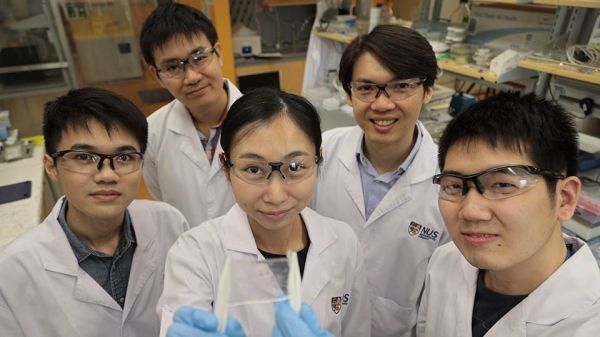NUS scientists have taken inspiration from underwater invertebrates like jellyfish to create an electronic skin with similar functionality.
Just like a jellyfish, the electronic skin is transparent, stretchable, touch-sensitive, and self-healing in aquatic environments. It can be used in everything from water-resistant touchscreens to aquatic soft robots.
The team, led by NUS Materials Science and Engineering Assistant Professor Benjamin Tee, worked with collaborators from Tsinghua University and the University of California Riverside spending just over a year to develop the material. Its invention was featured as the front cover of the journal Nature Electronics on 15 February 2019.
Asst Prof Tee has been working on electronic skins for many years and was part of the team that developed the first ever self-healing electronic skin sensors in 2012.
Read more at National University of Singapore
Image: Asst Prof Tee (back row, right) and his team created a transparent electronic skin that repairs itself in both wet and dry conditions (Credit: National University of Singapore)


